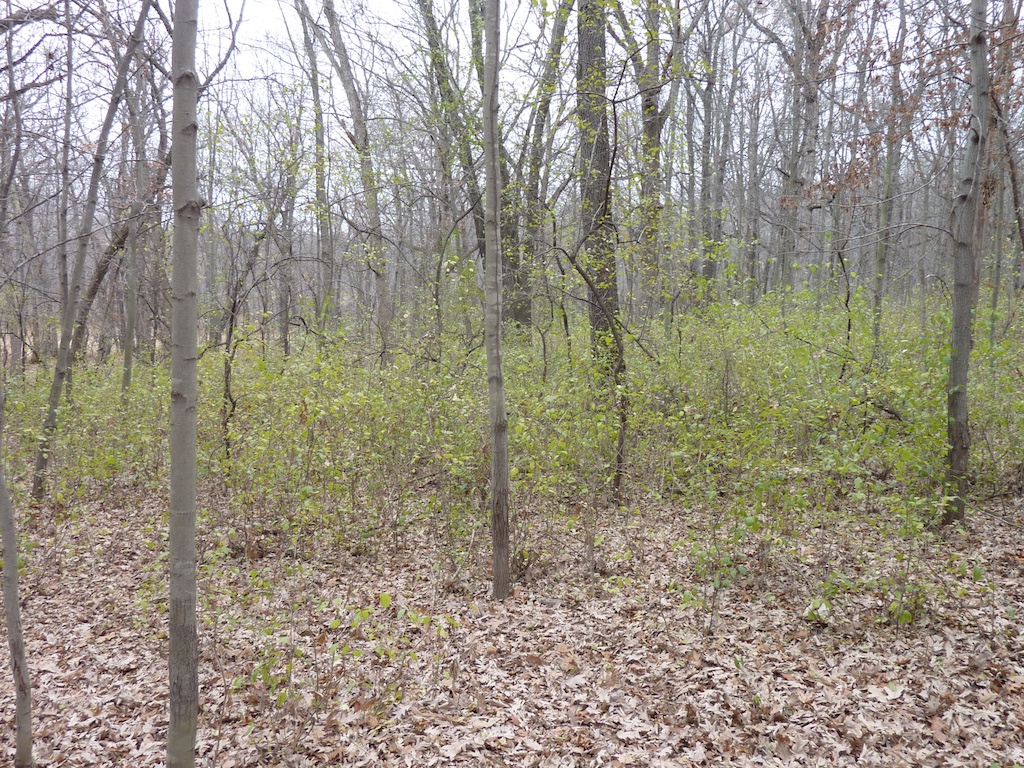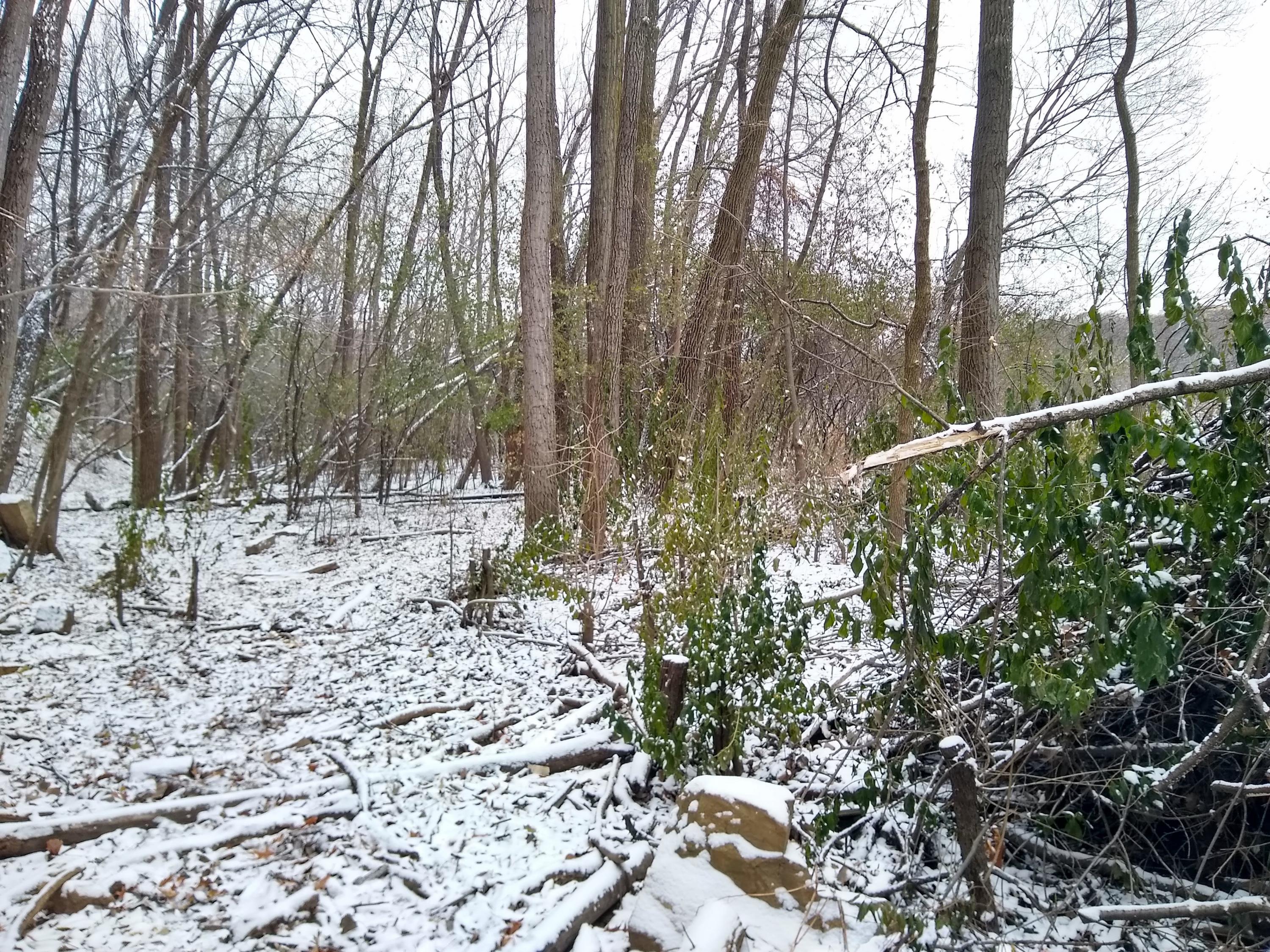'Tis the season ... to remove buckthorn?

Though it may seem odd, the best season to remove buckthorn may not correlate with the best time to be outdoors (hardcore winter fans' preferences notwithstanding).
If you're part of a professional habitat restoration crew working in a large area, winter's a great time to bring out a forestry mower. Once native plants have gone dormant and the ground has frozen, you can mow down and mulch buckthorn stands with less rutting or risk of unintended damage.
In city parks and our own backyards, late-fall or early-winter buckthorn removal has an additional significant benefit: It's simply easier to spot!
Seeing the problem
Winter is a great time to cut and remove buckthorn for many reasons, but one of the simplest is that buckthorn retains its leaves longer than most native plants.

Buckthorn leaves can still be green in mid-November and December.
Buckthorn is known for its distinctive timing or phenology. Unfortunately, its unique leaf-out and leaf-drop times allow this invasive shrub, whose spread harms wildlife and water quality, to extend its growing season beyond that of most of our native shrub and tree species. But this trait helps us get a leg up on buckthorn removal in fall and winter.
With its still-greenish or greenish-brown leaves, buckthorn stands out against an otherwise gray and brown background.
Provided the snow isn't too deep, winter is a fine time for homeowners and restoration professionals alike to remove buckthorn using a cut-and-paint method. If the tree is a tiny sapling or fully manual removal is preferred, it's also helpful to tie a ribbon around or otherwise mark the invasive buckthorn for spring removal.
For our restoration crews, winter helps make more removal efforts more efficient. Rather than scouring a mostly green woodland for buckthorn that's blending in, crews employed by FMR are better able to identify buckthorn and not mistake any native look-alikes (chokecherry, for example, which is also a great buckthorn replacement).
They're also better able to quickly find scattered individual buckthorn shrubs that might be at the forefront of the spread or have been missed in previous removal efforts.
But if you're employing the critical cutting method that FMR and other organizations have been using, late fall and early winter is not the best time. Instead, shoot for late spring or early fall in order to maximize nutrient removal from buckthorn's roots.
To learn more about ways that FMR is experimenting with buckthorn removal methods, check out our research and monitoring page for the latest updates. Not only are we leading the way on restoration experimentation, but we're partnering with researchers and other organizations to figure out how best to restore areas after buckthorn has been removed and build long-term resistance to future invasive plants.

Female buckthorn branches also bear berries deep into December. The fruit provides little nutritional sustenance (they're basically balls of sugar) but helps the invasive plant spread and further degrade potential habitat.
Get started on buckthorn removal
So if you've been waiting for the perfect time to remove that invasive buckthorn in your yard or on your land, this might just be it.
For a refresher on why we remove buckthorn and some useful how-tos, check out our overview of buckthorn and its removal.
If you'd like to restore local habitat and perhaps practice buckthorn removal in the process, we hope you'll join us as a volunteer.